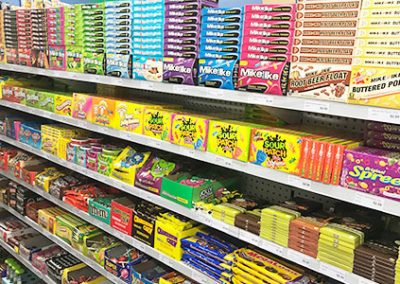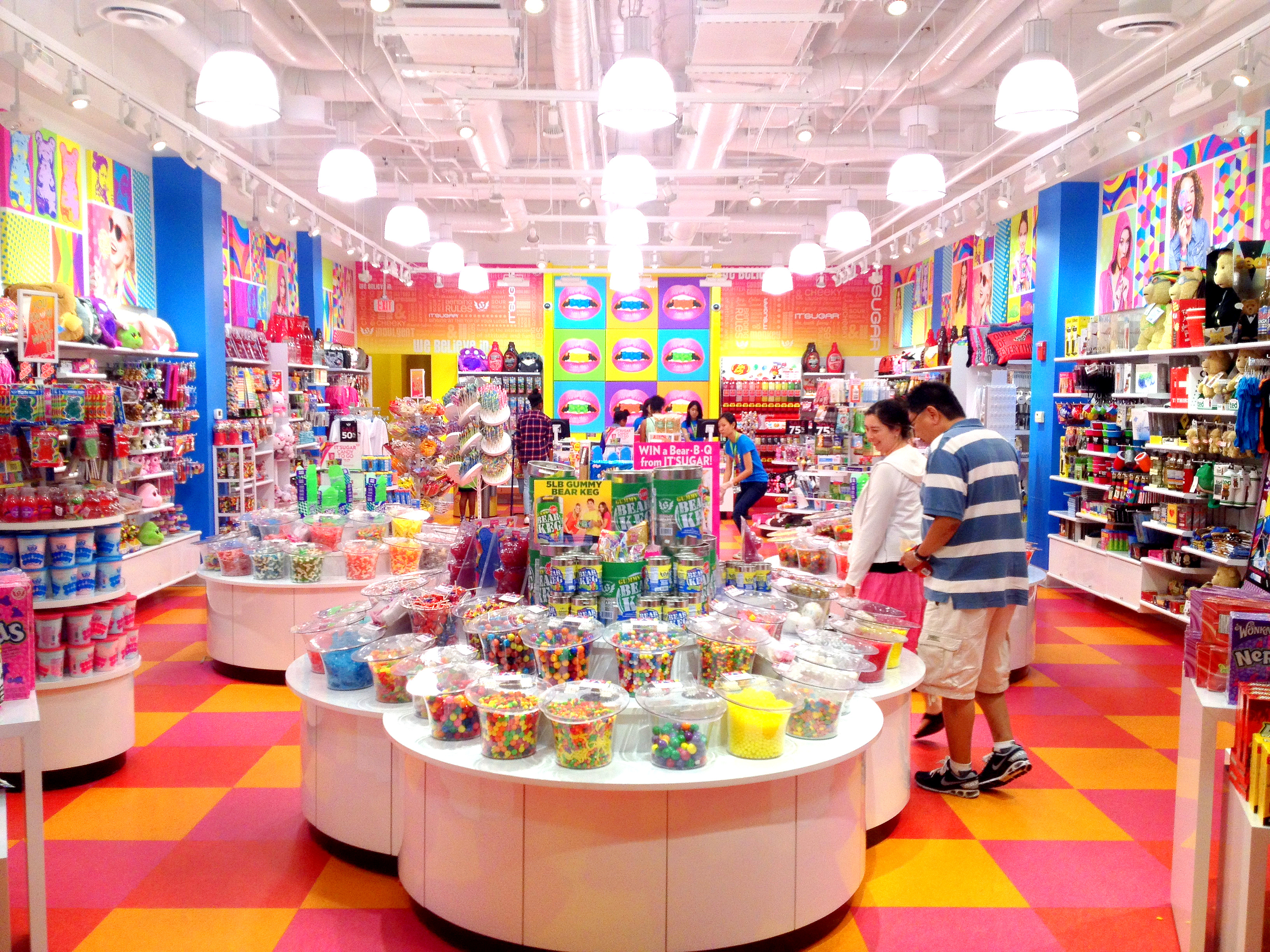Some Known Incorrect Statements About I Luv Candi
Some Known Incorrect Statements About I Luv Candi
Blog Article
More About I Luv Candi
Table of ContentsThe Ultimate Guide To I Luv CandiGet This Report about I Luv CandiWhat Does I Luv Candi Mean?Examine This Report about I Luv CandiSome Of I Luv Candi
We have actually prepared a lot of organization prepare for this sort of task. Below are the common customer segments. Customer Section Summary Preferences Just How to Locate Them Children Youthful customers aged 4-12 Colorful sweets, gummy bears, lollipops Companion with neighborhood schools, host kid-friendly occasions Teenagers Teens aged 13-19 Sour sweets, uniqueness things, fashionable treats Engage on social media sites, team up with influencers Moms and dads Grownups with children Organic and healthier options, sentimental candies Offer family-friendly promotions, advertise in parenting publications Students School pupils Energy-boosting sweets, budget-friendly treats Partner with nearby schools, advertise during exam durations Gift Consumers People seeking presents Premium chocolates, present baskets Produce attractive displays, use adjustable present options In evaluating the financial dynamics within our candy shop, we've located that consumers typically invest.Observations show that a normal client often visits the shop. Particular periods, such as vacations and unique occasions, see a surge in repeat visits, whereas, throughout off-season months, the frequency could decrease. da bomb. Determining the life time value of an average client at the candy store, we approximate it to be
With these variables in consideration, we can reason that the ordinary income per customer, over the training course of a year, floats. The most lucrative consumers for a candy shop are frequently households with young youngsters.
This market tends to make regular acquisitions, raising the shop's income. To target and attract them, the sweet-shop can utilize colorful and lively advertising and marketing techniques, such as vivid screens, catchy promotions, and possibly even hosting kid-friendly occasions or workshops. Developing an inviting and family-friendly ambience within the store can also boost the total experience.
The Ultimate Guide To I Luv Candi
You can also estimate your own earnings by using various assumptions with our financial plan for a sweet-shop. Ordinary month-to-month profits: $2,000 This kind of candy store is typically a tiny, family-run business, perhaps understood to residents yet not attracting large numbers of tourists or passersby. The shop may supply a choice of usual sweets and a couple of homemade deals with.
The shop does not normally bring unusual or pricey products, concentrating instead on budget friendly deals with in order to maintain regular sales. Presuming a typical investing of $5 per consumer and around 400 consumers per month, the monthly revenue for this candy store would certainly be approximately. Typical monthly profits: $20,000 This candy shop advantages from its strategic area in a busy metropolitan location, bring in a lot of consumers looking for wonderful indulgences as they shop.
In enhancement to its varied sweet option, this store may also market associated products like present baskets, candy bouquets, and novelty things, offering several income streams - pigüi. The store's area requires a greater budget for rental fee and staffing yet brings about higher sales quantity. With an estimated ordinary costs of $10 per consumer and regarding 2,000 clients per month, this store could generate
How I Luv Candi can Save You Time, Stress, and Money.
Found in a major city and visitor destination, it's a huge facility, commonly topped numerous floorings and perhaps part of a nationwide or international chain. The store offers a tremendous variety of sweets, consisting of special and limited-edition products, and product like branded clothing and devices. It's not simply a store; it's a location.
These attractions assist to attract hundreds of site visitors, substantially enhancing possible sales. The functional expenses for this sort of shop are substantial because of the place, size, team, and includes supplied. The high foot traffic and ordinary costs can lead to considerable earnings. Presuming an ordinary purchase of $20 per customer and around 2,500 consumers each month, this front runner store might accomplish.
Classification Instances of Expenses Average Regular Monthly Cost (Range in $) Tips to Minimize Expenses Lease and Utilities Store lease, power, water, gas $1,500 - $3,500 Take into consideration a smaller location, bargain rent, and utilize energy-efficient illumination and appliances. Stock Candy, snacks, packaging materials $2,000 - $5,000 Optimize supply management to reduce waste and track prominent things to avoid overstocking.
Marketing and Marketing Printed products, online advertisements, promotions $500 - $1,500 Focus on cost-effective electronic advertising and make use of social networks platforms completely free promotion. camel balls candy. Insurance Company liability insurance coverage $100 - $300 Search for affordable insurance coverage rates and consider bundling policies. Tools and Upkeep Money signs up, present shelves, repair work $200 - $600 Buy pre-owned devices when possible and perform routine maintenance to extend equipment lifespan
Getting The I Luv Candi To Work
Bank Card Handling Charges Costs for processing card payments $100 - $300 Negotiate reduced processing costs with payment processors or discover flat-rate choices. Miscellaneous Workplace supplies, cleansing supplies $100 - $300 Buy wholesale and try to find discounts on products. A candy shop becomes successful when its total earnings exceeds its overall set costs.

A huge, well-located sweet store would undoubtedly have a higher breakeven factor than a little shop that doesn't require much income to cover their expenditures. Curious concerning the earnings of your sweet store? Experiment with our user-friendly monetary strategy crafted for sweet-shop. Merely input your own presumptions, and it will help you determine the amount you need to make in order to run a rewarding service.
How I Luv Candi can Save You Time, Stress, and Money.

Lastly, economic recessions that minimize consumer costs can impact sweet-shop sales and productivity, making it vital for sweet-shop to handle their expenses and adjust to changing market problems to remain successful. These threats are commonly consisted of in the SWOT analysis for a candy store. Gross margins and net margins are key indications made use of to assess the earnings of a sweet shop company.
Essentially, it's the earnings staying after deducting costs straight pertaining to the candy inventory, such as acquisition expenses from vendors, production prices (if the candies are homemade), and team salaries for those associated with manufacturing or sales. Web margin, on the other hand, factors in all the expenditures the sweet store sustains, including indirect expenses like administrative expenses, advertising and marketing, lease, and taxes.
Candy shops generally have a typical gross margin.For circumstances, if your sweet store gains $15,000 per month, your gross profit would be approximately 60% x $15,000 = $9,000. Think about a sweet shop that sold 1,000 sweet bars, with each bar priced at $2, making the total income $2,000.
Report this page